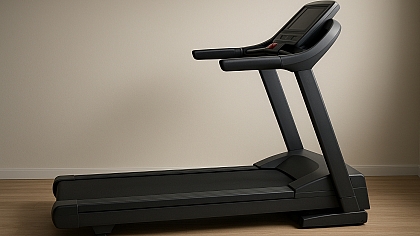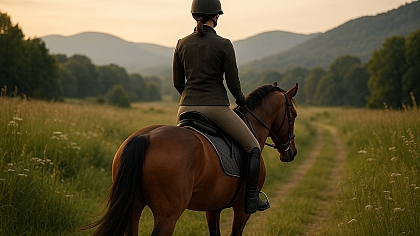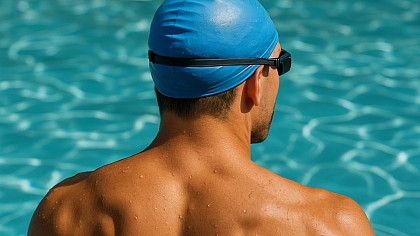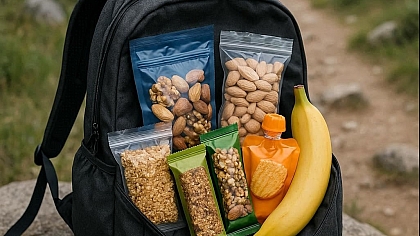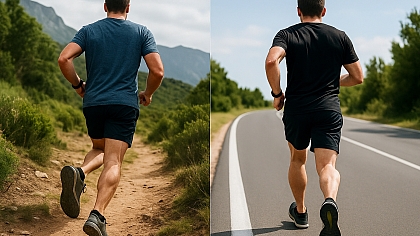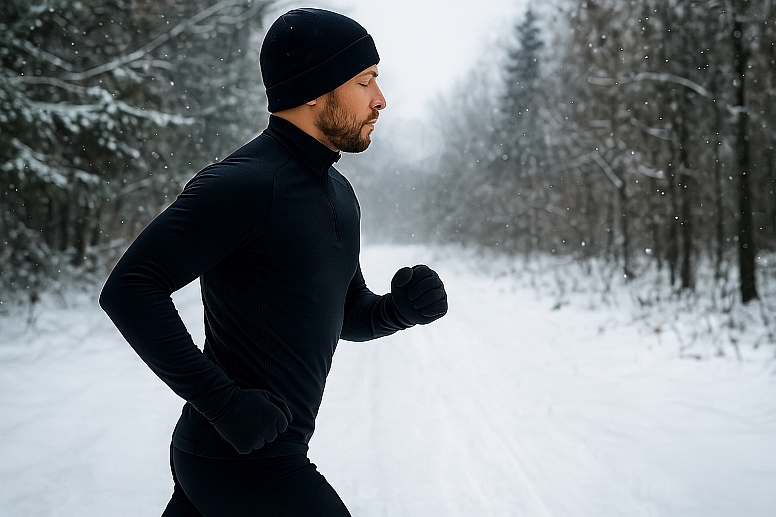
Best Base Layers for Sub-Zero Workouts
Your First Line of Defence Against the Cold
Exercising in sub-zero temperatures requires a different strategy than simply piling on heavy clothes. The key to warmth and comfort lies in your base layer—the piece of clothing that touches your skin. A good base layer manages moisture; a bad one traps it, leaving you wet, chilled, and miserable.
Your goal is not to stay perfectly dry, but to stay warm by moving sweat away from your body as efficiently as possible.
Why Your Cotton T-Shirt is the Worst Choice
Cotton is a terrible base layer for cold-weather activity. It acts like a sponge, absorbing sweat and holding it directly against your skin. As your body cools, this wet fabric rapidly drains your body heat, increasing your risk of hypothermia. This is known as "cotton kill" for a reason. The right base layer uses technical fabrics designed to solve this exact problem.
The Science of Staying Warm: Moisture Wicking
The principle behind all good base layers is moisture management. As you exercise, you sweat. If that sweat lingers on your skin, it cools you down. A technical base layer pulls (or "wicks") that moisture from your skin to the outer surface of the fabric, where it can evaporate. This process keeps your skin much drier and helps regulate your body temperature, preventing both overheating and chilling.
Choosing the Right Fabric: Merino Wool vs. Synthetics
Two types of fabric excel at this: merino wool and synthetics (like polyester). Each has distinct advantages.
Merino Wool
- How it works: Merino wool fibers can absorb a significant amount of moisture vapor (not liquid sweat) without feeling wet. They also trap warm air in their crimped fibers.
- Pros: Exceptionally warm for its weight, naturally odor-resistant (bacteria can't easily grow on it), regulates temperature brilliantly, and feels soft and non-itchy.
- Cons: Generally more expensive, and can be less durable than synthetics, especially when wet.
Synthetics (Polyester)
- How it works: Synthetic fibers are hydrophobic (they repel water). They push liquid sweat along the surface of the fabric to evaporate.
- Pros: Very durable, dries incredibly quickly, and is often more affordable than merino wool.
- Cons: Can develop a permanent odor more quickly as bacteria cling to the synthetic fibers. It can feel cooler than wool once you stop moving.
The Best of Both Worlds: Many brands blend merino wool and synthetic fabrics to create a base layer that offers the warmth and odor-resistance of wool with the durability and quick-dry performance of polyester.
Weight Matters: Choosing the Right Thickness
Base layers come in different weights, similar to the thread count of sheets. Your choice depends on the temperature and your activity level.
| Weight | Best For | Temperature Range | Feel |
|---|---|---|---|
| Lightweight | High-intensity activities (running, skiing) | 20°F to 40°F (-7°C to 4°C) | Like a second skin |
| Midweight | Moderate-intensity activities (hiking, snowshoeing) | 0°F to 30°F (-18°C to -1°C) | A comfortable, snug fit |
| Heavyweight | Low-intensity activities or extreme cold | Below 0°F (-18°C) | Thick and very warm |
For most sub-zero workouts involving running, skiing, or snowshoeing, a lightweight to midweight base layer is ideal. You want to stay warm without overheating once your heart rate climbs.
The Non-Negotiables of Fit
A base layer must fit correctly to work. It should feel like a second skin.
- Snug but not restrictive: It needs to make contact with your skin to wick moisture effectively. There should be no baggy areas, but you should have a full range of motion without the fabric pulling.
- Flatlock Seams: Look for seams that are flat and taped. Bulky, raised seams will chafe over miles of repetitive motion.
- Long Sleeves & Coverage: A crew neck or zip-neck and long sleeves are standard for sub-zero temps. Some athletes prefer a base layer with a thumbhole to keep sleeves in place and protect the wrists.
Your Winter Warmth System
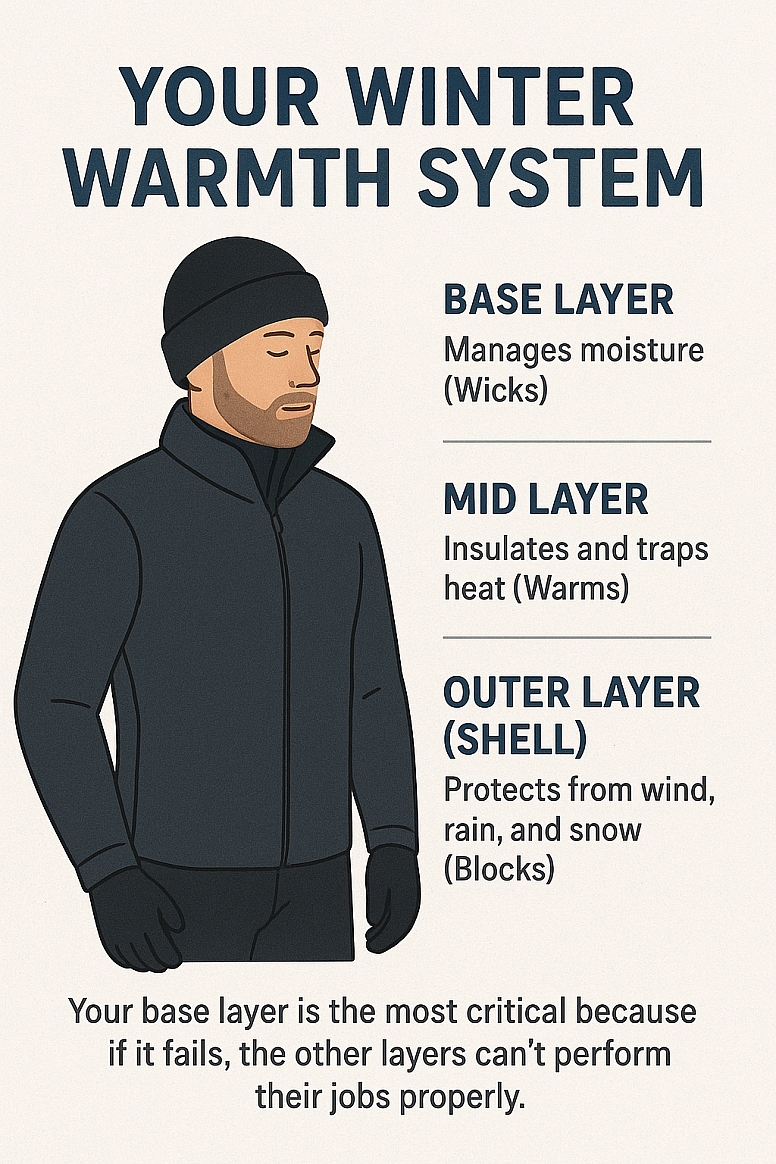
Remember, a base layer is only part of a system. The classic three-layer system is:
- Base Layer: Manages moisture (Wicks).
- Mid Layer: Insulates and traps heat (Warms).
- Outer Layer (Shell): Protects from wind, rain, and snow (Blocks).
Your base layer is the most critical because if it fails, the other layers can't perform their jobs properly.
Invest in a Foundation That Works
The right base layer is the difference between a miserable, shivering workout and an invigorating winter adventure. It’s the workhorse of your cold-weather kit, working silently to keep you comfortable so you can focus on your performance.
Don't just dress for the cold. Dress to conquer it.
Frequently Asked Questions
Can I wear two base layers if it's really cold? It is almost always better to wear one good base layer and add a proper insulating mid-layer (like a fleece or thin puffy) on top. Wearing two base layers can trap moisture between them, reducing their effectiveness.
How do I wash my technical base layers? Always follow the garment's label. Generally, wash in cold water on a gentle cycle with a technical sportswear detergent. Avoid fabric softeners and bleach, as they can clog the moisture-wicking fibers. Tumble dry on low or hang to dry.
Why does my synthetic base layer smell so bad? Bacteria that cause odor cling more easily to synthetic fibers. To combat this, look for synthetics with anti-odor treatments or switch to a merino wool blend. Always wash your base layer soon after your workout.
Is it okay if my base layer feels damp after a workout? Yes, to a degree. Its job is to move moisture away from your skin. The fabric itself may feel damp, but your skin should feel relatively dry. If your skin is soaked, you may be overdressed or your layer may not be wicking effectively.



